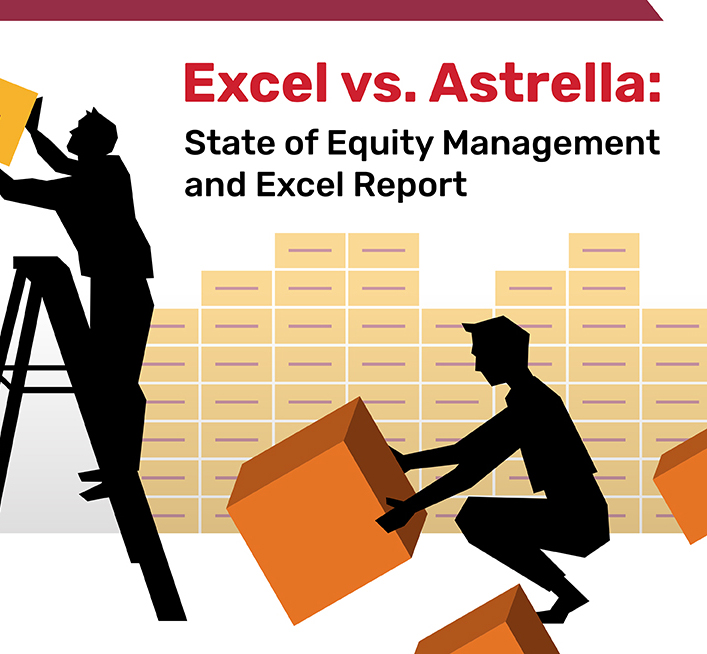Trigger acceleration is essential to employment agreements, providing executives with accelerated vesting of their equity compensation upon certain events. It can come in single or double-trigger acceleration, offering different benefits and drawbacks. This article will explore the differences between single and double-trigger acceleration, outline each type’s advantages and disadvantages, and recommend the best type for a given business. We’ll also provide readers with tips on how to make the right decision for their own company. So, if you want to understand what trigger acceleration is and how it works, read on!
Trigger acceleration is essential to employment agreements, providing executives with accelerated vesting of their equity compensation upon certain events. It can come in single or double-trigger acceleration, offering different benefits and drawbacks. This article will explore the differences between single and double-trigger acceleration, outline each type’s advantages and disadvantages, and recommend the best type for a given business. We’ll also provide readers with tips on how to make the right decision for their own company. So, if you want to understand what trigger acceleration is and how it works, read on!
What Is Single Trigger Acceleration?
Single Trigger Acceleration is a clause in a company’s employment agreement that gives executives the right to accelerated vesting of their equity compensation upon certain events. This type of acceleration is often found in upper-level executives’ employment agreements, especially those highly incentivized with a significant amount of equity.
The most common type of single-trigger acceleration triggers when an executive is terminated without cause or resigns for good reason. This form of acceleration allows executives to receive immediate vesting of their equity compensation, regardless of how long they have been employed with the company. Some companies also allow partial vesting in such cases, depending on how much time has passed since the executive was hired.
Other events, such as a change of control or bankruptcy can also trigger single-trigger acceleration. In these cases, it may be more challenging to determine when and if the executive should receive accelerated vesting, as they may not necessarily be terminated without cause or resign for good reason. However, it can still provide a valuable incentive structure for executives looking to remain loyal to their company through difficult times.
When deciding which type of trigger acceleration is best for your business, it’s essential to consider single and double-trigger options. Single trigger acceleration offers the benefit of providing immediate vesting upon termination without cause or resignation for good reason; however, it does not offer any protection against involuntary termination due to poor performance or other factors outside the employee’s control. Double trigger acceleration involves two separate triggering events (such as termination without cause and resignation for good reason), both of which must occur before an executive receives accelerated vesting; this provides additional protection against involuntary terminations while still allowing executives to receive accelerated vesting under certain circumstances. The ultimate decision will depend on your company’s specific needs and goals; we encourage you to research what type of triggering event best suits your organization’s individual needs and objectives.
What Is Double Trigger Acceleration?
Double trigger acceleration is a clause that is commonly found in employment agreements. It guarantees that employees will benefit from accelerated vesting of their equity compensation if two separate events occur – either a change in the company’s ownership or a termination of employment. This type of clause can be highly beneficial for businesses, as it incentivizes executives to remain loyal while protecting them against involuntary terminations due to poor performance or other external factors.
The advantages of double trigger acceleration are clear; staff are more likely to stay with the company and receive rewards for their loyalty, and morale within the business is improved as well. However, some drawbacks need to be taken into consideration. Negotiating this type of agreement can be difficult, as executives may demand both triggers be met before they accept any vesting rights. Moreover, companies may have trouble securing investors willing to meet both conditions necessary for accelerated vesting. Double trigger acceleration can incur costs if multiple executives must satisfy both criteria before qualifying for vested rights.
Double trigger acceleration may prove advantageous for employers who wish to reward loyalty without additional financial risk but should carefully assess all pros and cons beforehand. Readers should thoroughly research the concept before determining which type of trigger acceleration best suits their business situation.
Who Most Often Takes Advantage of Trigger Acceleration?
Who stands to gain the most from trigger acceleration? Startups, venture-backed companies, and executives in the C-suite are all well-positioned to capitalize on this incentive structure. Trigger acceleration can help startups and venture-backed companies incentivize their people and partners more efficiently while protecting against potential risks. Executives in the C-suite can benefit from accelerated vesting of equity compensation, enabling them to reap rewards sooner rather than later. In addition, trigger acceleration can be attractive for existing employees looking for additional incentives to stay with an organization or new hires wanting to join a company offering accelerated vesting of equity compensation. Finally, when two companies merge, or one acquires another, triggering accelerated vesting of equity compensation helps ensure key personnel remain motivated throughout the process to achieve desired results.
Overall, businesses should research available options carefully before implementing any form of trigger acceleration, as each situation will vary depending on its goals and resources. Regardless, those who stand the most to gain from using this type of incentive structure are startups and venture-backed firms, along with executives in the C-suite who seek faster returns on their investments, as well as current and prospective employees looking for extra motivation.
Under What Cases Does Trigger Acceleration Occur?
Trigger acceleration is a clause in an employment agreement that accelerates the vesting of equity compensation when certain events occur. These events can vary significantly depending on the agreement between the employer and employee. Generally, trigger acceleration occurs when one or more of the following scenarios are met:
- Company Acquisition/Merger/Sale: When a company is acquired, merged, or sold, employees may be entitled to accelerated vesting of their equity compensation because of the change in ownership. This is especially true for executives who have been with the company for many years and have vested in many stock options.
- Executive Departure: Executives may also be entitled to accelerated vesting upon leaving the company for any reason. This could include voluntary departure due to retirement, resignation from good cause, or termination without cause. It is important to note that some companies will not allow accelerated vesting upon an executive’s departure if it could be considered a “golden parachute” payment, which the law would not permit.
- Company Going Public: Companies that go public must file documents with the Securities and Exchange Commission (SEC) regarding their financials and corporate structure. As part of this filing process, they must also disclose information about employee equity compensation plans, including triggers related to vesting acceleration, which must comply with SEC regulations.
- Restructuring: Companies may also offer accelerated vesting when restructuring or experiencing changes in ownership or control, such as management buyouts or leveraged buyouts. The reasoning behind offering this type of benefit is often due to loyalty considerations and providing some form of protection in case of involuntary termination during times of transition and uncertainty within the company itself.
- Performance Targets Met: In some cases, employers may offer incentives for employees meeting specific performance targets by granting them accelerated vesting benefits upon reaching these goals. This type of trigger acceleration can effectively incentivize employees while ensuring that performance targets are met on time and within budget constraints set by management teams.
Overall, trigger acceleration clauses can benefit employers and employees but should still be carefully researched before being implemented into any employment agreements so that all parties involved know their rights and responsibilities under such agreements should any triggering event occur.
Advantages of Single Trigger Acceleration
Single-trigger acceleration is a popular and effective tool for providing employees with equity compensation more quickly than double-trigger acceleration. It can be an attractive option for companies since it offers several advantages in comparison to other forms of vesting.
The main advantage of single-trigger acceleration is its ability to quickly vest equity awards, giving employees access to their equity faster than double-trigger acceleration. This can be especially beneficial when an employee needs to leave the company due to unexpected circumstances or if the company wants to reward specific individuals for their performance. Single-trigger acceleration also gives employers more flexibility when setting up vesting schedules, allowing them to adjust the terms as needed over time.
Another advantage of single-trigger acceleration is that it tends to be less expensive than double-trigger acceleration since employers do not need to pay large sums in the event of a triggering event. Additionally, single-trigger acceleration poses less risk for shareholders since there is no need for another triggering event before employees can access their equity. This makes it easier for companies to manage and monitor costs associated with equity compensation while still providing an attractive benefits package for employees.
Finally, single-trigger acceleration offers employers more control over their equity compensation plans by allowing them to tailor the terms as needed without changing the underlying agreement. This enables companies to adjust vesting terms on a case-by-case basis without renegotiating contracts or making significant changes to stay compliant with regulations and standards set forth by governing bodies such as the Securities and Exchange Commission (SEC).
Overall, single-trigger acceleration can be an effective way for companies to provide quick access to equity compensation packages while limiting the risk and costs associated with double-trigger accelerations. Companies should thoroughly research this type of incentive structure before deciding whether it suits their business model.
Advantages of Double Trigger Acceleration
Double trigger acceleration can be an effective way for companies to reward their employees and protect their investors. It provides greater security and control over the vesting process, allowing companies to plan and budget accordingly while rewarding loyalty and hard work. Additionally, it helps reduce financial risk by ensuring that no equity compensation is paid out unless both events occur. With all these advantages in mind, companies must research both options thoroughly before deciding which type of trigger acceleration is best suited for them.
Which Type of Trigger Acceleration Is Right for You?
When deciding on the correct type of trigger acceleration for your business, there are many elements to consider. It would be best to contemplate each option’s legal and tax ramifications and the costs associated with establishing and sustaining it. Moreover, it is crucial to consider your company’s objectives when selecting which trigger acceleration will best fit.
Single-trigger acceleration can be advantageous in certain situations due to its ease of use, practicality, and savings potential. However, this choice carries more risk for shareholders than double-trigger acceleration does. Additionally, depending on your industry and region, single-trigger acceleration may violate specific laws or regulations.
Double-trigger acceleration offers enhanced security over vesting by requiring two distinct events before equity compensation is rendered. This implies that no equity awards shall be given out unless both conditions outlined in the agreement have been fulfilled. Double-trigger acceleration also allows companies to plan and budget correctly while rewarding loyalty and hard work from their staff members. The downside of this selection is that it may be pricier than single-trigger acceleration due to additional legal expenses involved in setting up a double-trigger negotiation.
Conclusion
In conclusion, making the right choice regarding trigger acceleration is essential for companies as it can help ensure that equity compensation is distributed fairly and equitably. Companies should consider factors such as industry standards, legal implications, tax implications, costs of implementation, and the business’s overall objectives when deciding on single or double-trigger acceleration. Additionally, all parties involved should be mindful of their rights and responsibilities should any triggering event occur. Doing this will enable companies to make informed decisions based on their needs and goals.

Tom Kirby
Tom Kirby serves as the Head of Global Sales at Astrella. With more than 20 years of experience in sales and business development, he is dedicated to fostering strong client relationships and assisting both private and public companies in understanding and effectively communicating their value.
- Tom Kirby#molongui-disabled-link
- Tom Kirby#molongui-disabled-link
- Tom Kirby#molongui-disabled-link
- Tom Kirby#molongui-disabled-link
































































































































